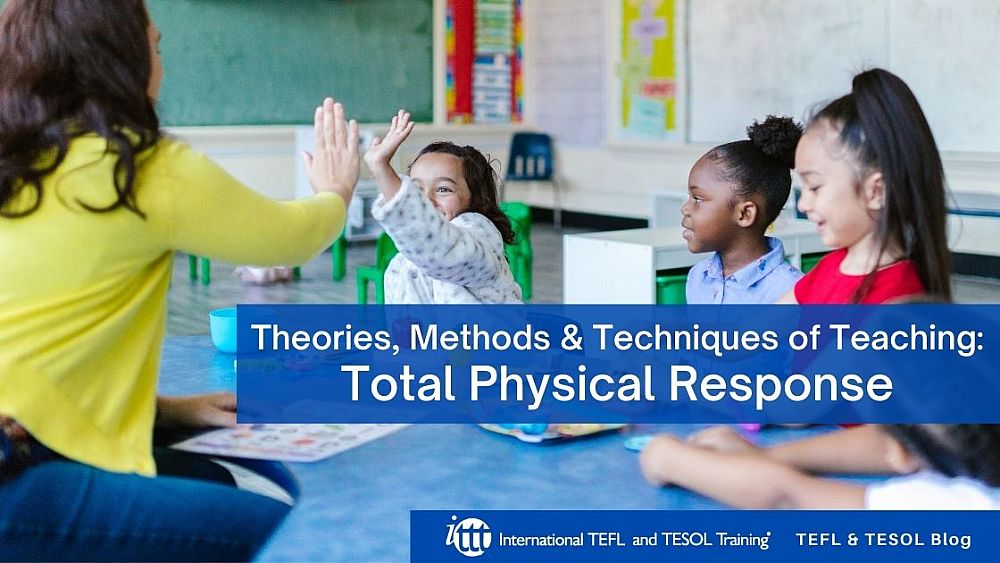Theories, Methods & Techniques of Teaching - Total Physical Response

It has been noted that the function of the brain is separated into two sides (hemispheres) commonly known as the left and right brain. What specific functions are included in the two sides of the brain and how did this information become incorporated into a mainstream ESL teaching methodology.
Table of Contents
Watch the video about this topic
Check out what our course grads say in our many video testimonials!
Watch the video about this topic
This particular methodology is accredited to James Asher around 1965 and is called Total Physical Response (TPR). Asher looked at the way in which we learn our native language and he saw that most children, before they even went to school, have picked up a very large percentage of both the grammar and the vocabulary that they would use in their native language, without any type of formal teaching.
He started to look at ideas of how to use the whole of our brain in language learning in the way that we do when we're very young. It's accepted that within our brain there are two hemispheres, one is the left hemisphere the other is the right hemisphere and one of the functions of the left hemisphere is language learning. One of the major functions of the right hemisphere is controlling our body's movement,Asher insight was that when we are young, what we tend to do in order to learn language is to use the whole of our brain, whereas formal schooling tends to make us use only use half of it, only the left-hand side. So his idea was to try to introduce movement into the process of learning a language to ensure that we're using the whole brain and therefore potentially doubling the capacity of our learning within that process.
The use of motion and learning would be a fairly typical way of using total physical response. If for example we are learning the vocabulary of the parts of the body then we wouldn't just listen and repeat those particular words. We would actually use movement. So if we were learning the word for our arm, we would move our arm whilst we were saying that word. If we were learning the word hand, we would use our hand whilst we're learning that word and by bringing those two things together it was shown that would actually enhance the learning process.
One of the main positives points to this particular methodology is that it's very good for young students, for young learners. If you can get the young learners to be moving around whilst they're actually learning then it will enhance the learning process and they will enjoy it. This methodology is said to give much longer term retention of those particular vocabulary words than if you were just to say them without any movement at all.
Some of the negative points for this particular methodology; whilst it is good for young learners obviously it wouldn't be so good for one-to-one professional learners or for very high levels of grammar. One of the other requirements of this particular methodology goes back into the way in which we learn our native language. Within our native language we are listening to what's being said around us but there's a long silent period involved in learning our native language, where we don't say anything, we're just absorbing the information and then we start to use it. This long silent period is part of the total physical response methodology and therefore we can't expect to get immediate results from this.
## Are you ready to teach English as a foreign language?
Apply now & get certified to teach english abroad!
Speak with an ITTT advisor today to put together your personal plan for teaching English abroad!
Send us an email or call us toll-free at 1-800-490-0531 to speak with an ITTT advisor today.
Related Articles:
- Top 10 Cities in Europe with the Highest Demand for English Language Teachers
- 5 Reasons To Take A TEFL Course Right Now - Even If You Are Not Leaving Yet | ITTT | TEFL Blog
- All the Documents You Will Need to Teach English Abroad
- The Impact of Positive Motivation on an ESL Classroom
- You're Never Too Old to Change Your Life and Do a TEFL Course | ITTT | TEFL Blog
- Getting Student Placement Right - The Best Desk Arrangements for EFL Students



